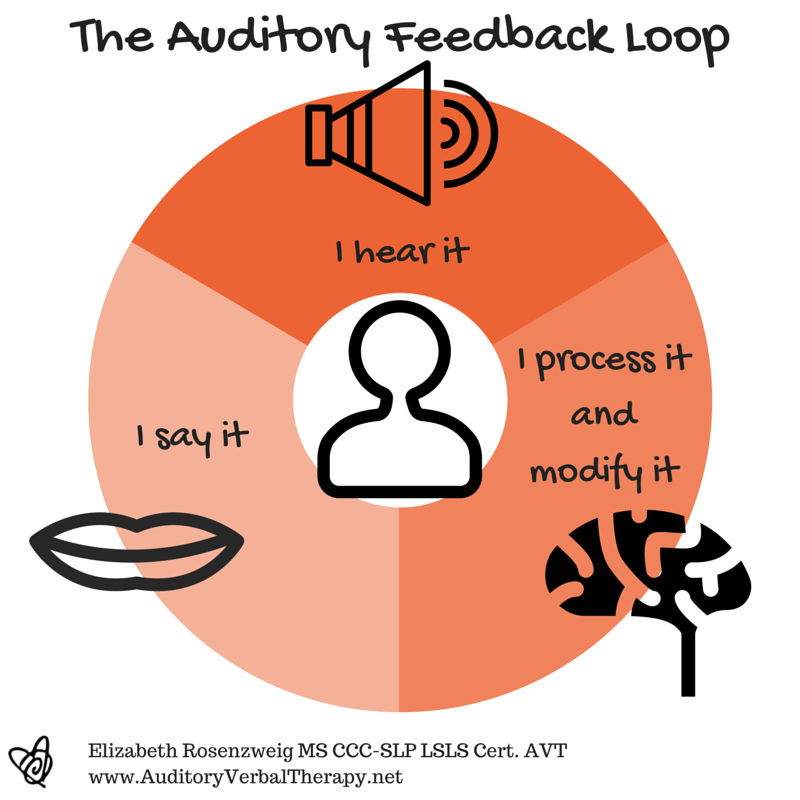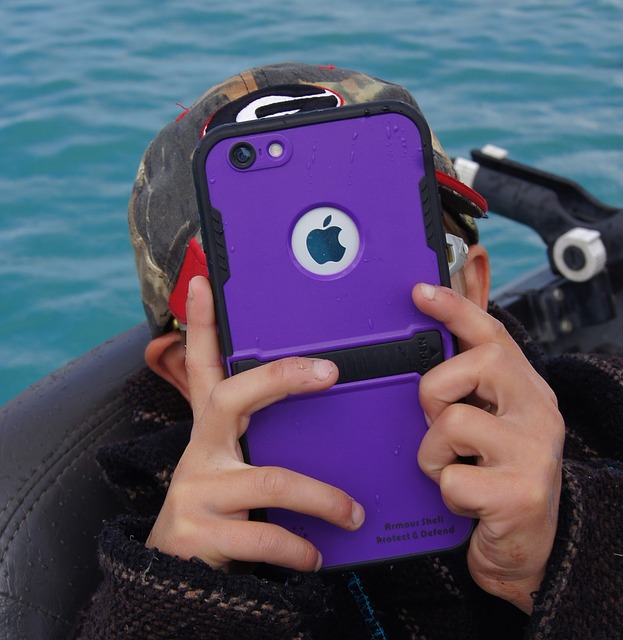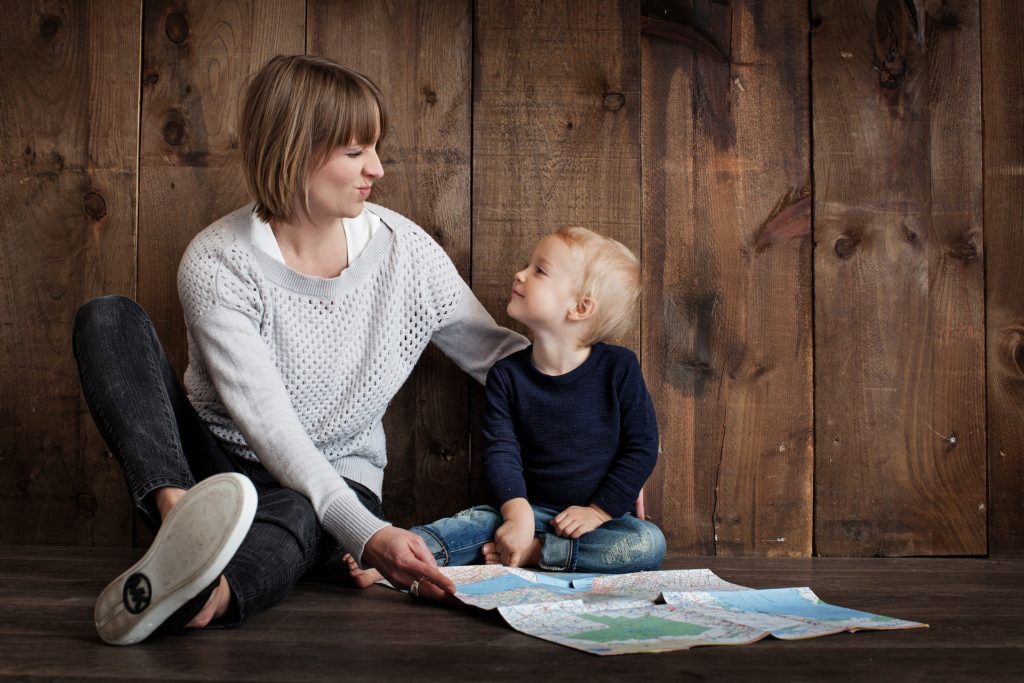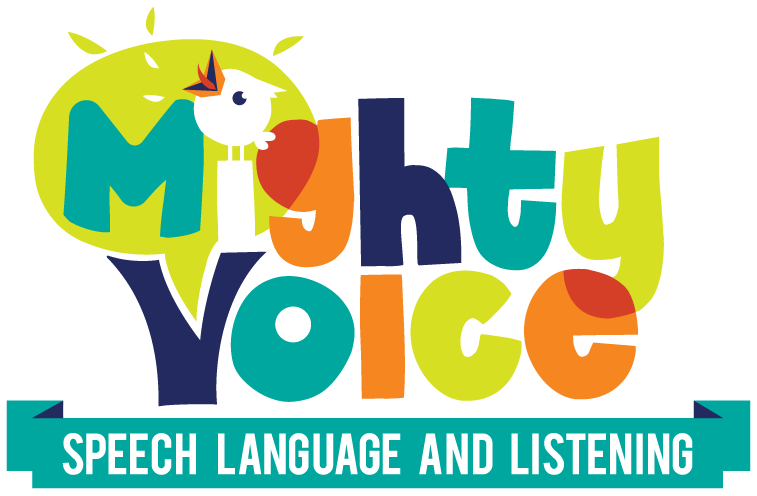Have you ever been talking about two people, and accidently mixed up their names? Like instead of Mary and Ben you said “Bary and Men” and then caught yourself? Or accidentally called your child or partner the wrong name and had to correct yourself? If you have, you have used the auditory feedback loop.
What is the Auditory Feedback Loop?
I love how Auditory Verbal Therapy describes and visualizes the auditory feedback loop. She describes it as having 3 parts–I say it, I listen to it, and I process and modify it. And for those of us with typical hearing, we do it so naturally and seamlessly that we don’t even think about it.

But have you ever had those times when your brain didn’t catch your mix up? When your partner or child stopped you and said “That’s not my name!’ Then you’ve also experienced of the things we take for granted sometimes–using the auditory feedback loop consistently and effectively takes practice and effort.
Children who are deaf and hard of hearing need to be taught to use their auditory feedback loop to help improve their speech and language productions. It’s one step in helping them become more independent–when they can self-monitor and correct their own production of speech and language structures, they become less reliant on adults to help point out their errors or interpret when their meaning or speech isn’t clear.

Strategies to Improve the Auditory Feedback Loop
- Repeat what they said, how they said it. We are really good at interpreting what our children say, and knowing what they mean. So this one can be kind of tricky, but the goal is to repeat their words/sentence structure/word endings, etc. back to them so they can hear how they said it. If they said “Mom, me need my haf” instead of “Mom, I need my hat,” you would say back to them “Hmm, you said you need your haf, but I see you looking at your hat” And then wait–give your child a chance to fix what they said. If they don’t, or can’t, give them what they missed…something like “Oh, you need an ending on your word, like this… “I need my hat.”
- Use your child’s remote mic to help make their speech easier to access. We’re used to giving others a remote mic so our children can understand then more easily, and now we’re going to give our kids the same boost. Have them wear the mic, or pass it back and forth as you’re talking or reading, and see if it helps them pay attention and “fix” their own errors. This can also be especially useful during reading–if you’ve ever seen classroom teachers use whisperphones during reading time, it’s basically the same idea–when your own voice is highlighted, you pay more attention to what you’re saying.
- Record your child, or have them record themselves and then listen to it. Most children, especially as they move into the preschool and early elementary years, love to see themselves on video. Use it to your advantage! Record them telling you a story about their day, or practicing some of their vocabulary or speech words, and then listen to it back together. If there were errors, just wait and see if your child notices them. If not, you can comment on one or two in a supportive way like “Hmm, I heard you say_____” and then wait and see if they can fix it. If not, you can give them the model of how they could say it. If they really enjoy this activity, it can be fun to record them telling the same story over a period of days or weeks, and help them see how much their speech and language improves each time.
Point Out the Progress Too!
There’s also a caveat here…while we’re striving to help grow our kids’ speech and language and listening skills, and build their auditory feedback loop, we also want to encourage them to talk without fear of us pointing out every time they leave off a word ending or mispronounce something.

One way we can do this is to also praise their correct productions. Find times when your child has mastered a word ending or grammatical construction, and point it out. Make it a point to highlight these just as often, if not more, than errors. You might say something like “You said ‘The puppies were at the park’ I love how you noticed there were two puppies, and you put that ending on there.” Or “Wow, you put all the little words in when you said ‘The ice cream is in the cone.'”
